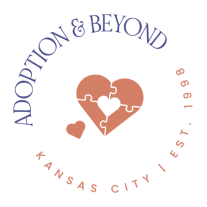Picture yourself standing at the edge of a vast emotional landscape, where the intertwining paths of adoption contact agreements and human emotions converge.
As you take your first steps into this complex terrain, you may wonder why these agreements profoundly impact our feelings.
What is it about the delicate balance between connection and separation that stirs the depths of our souls?
In this discussion, we will explore the intricate web of emotions that entangle themselves within adoption contact agreements, shedding light on their profound power over our hearts and minds.
Prepare to embark on a journey of understanding as we unravel this emotional tapestry’s complexities and discover the underlying reasons.
Key Takeaways
- Adoption contact agreements play a crucial role in facilitating emotional healing for both birth parents and adoptive parents.
- Open and honest communication within these agreements strengthens the connection and trust between all parties involved in the adoption.
- Adoption contact agreements help address the sense of loss and grief experienced by birth parents and adopted children.
- Fear and uncertainty in the adoption process can be managed through open communication, education, and building a strong support system.
Understanding the Importance of Connection
Understanding the importance of connection is crucial when adopting contact agreements and the emotions involved. Building trust is an essential aspect of creating a strong bond between birth parents, adoptive parents, and the adopted child. It’s through this trust that all parties can navigate the complexities of adoption and ensure the well-being of the child.
Building trust requires open and honest communication. Birth parents may have concerns about their child’s well-being, while adoptive parents may have fears about their ability to meet the child’s emotional needs. By openly discussing these concerns and fears, both parties can work together to address them, leading to a stronger connection and greater trust.
In addition to building trust, adoption contact agreements play a crucial role in emotional healing. For birth parents, seeing their child grow up in a loving and stable environment can bring a sense of comfort and closure. It allows them to witness the positive impact of their decision and find peace in knowing that their child is thriving. On the other hand, adoptive parents may also experience emotional healing through contact agreements. Being able to provide updates and maintain a connection with the birth parents can alleviate any lingering doubts or insecurities they may have had about their ability to parent.
Understanding the importance of connection in adoption contact agreements is essential for all parties involved. Building trust and facilitating emotional healing through open communication and contact can create a sense of unity and support for the child. The adoption journey can be a positive and transformative experience for everyone involved by prioritizing these connections.
Exploring the Role of Loss and Grief
All parties involved must acknowledge and navigate the loss and grief inherent in the adoption process. Birth parents may experience a sense of loss when their child is adopted. They might grapple with feelings of sadness, guilt, and longing. Similarly, the adopted child may experience a sense of loss and grief for their birth family and their biological roots. It is important to recognize and address these emotions to ensure the well-being of all individuals involved.
The role of support in managing loss and grief cannot be overstated. Adoptive parents, birth parents, and adopted children all need a strong support system to help them navigate the complex emotions that arise throughout the adoption process. Support can come in various forms, such as therapy, support groups, or even close friends and family members who are empathetic and understanding.
The impact of loss and grief on relationships within the adoption triad is significant. Adoptive parents may need to navigate their own grief while supporting their child’s journey of self-discovery and understanding. Birth parents may struggle with feelings of loss and grief while trying to maintain a healthy relationship with their child and the adoptive family. Adopted children may experience a range of emotions, including confusion, anger, and sadness, as they grapple with their identity and their connection to their birth family.
To visually represent the emotional impact of loss and grief, the following table evokes a sense of longing, sadness, and reflection:
| Emotion | Description | Example |
|---|---|---|
| Longing | A deep yearning | Longing for a lost love |
| Sadness | Feeling of sorrow | Tears streaming down |
| Reflection | Contemplation | Staring into the sunset |
| Guilt | Feeling of remorse | Carrying a heavy burden |
Navigating loss and grief is a complex journey, but with the support of loved ones and a commitment to emotional well-being, individuals involved in the adoption process can come to terms with their emotions and build healthy relationships.
Examining the Power of Identity and Belonging
As you explore the emotional impact of loss and grief within the adoption process, it becomes evident that a crucial aspect to consider is the power of identity and belonging.
Adoption can often lead to an identity crisis for both the adoptee and the birth parents. The adoptee may struggle with questions about their biological roots, genetic traits, and cultural heritage. They may feel a deep longing to know who they are and where they come from. This search for identity can be further complicated by the fact that they may have been separated from their birth family due to circumstances beyond their control. As a result, they may experience a sense of rejection or abandonment, which can intensify their feelings of loss and grief.
Belonging is another powerful aspect of identity that can be affected by adoption. The adoptee may struggle with a sense of not fully belonging to their adoptive family, especially if they’re aware of their adoption. They may feel like an outsider or different from their siblings biologically related to their parents. This can create a deep longing for a sense of belonging and acceptance.
For birth parents, the power of identity and belonging can also play a significant role. They may experience a sense of loss and grief over the decision to place their child for adoption. They may question their own identity as a parent and struggle with feelings of inadequacy or guilt. Additionally, birth parents may also experience a sense of rejection, especially if the adoption contact agreements limit their involvement in the child’s life.
Unpacking Fear and Uncertainty
Navigating the adoption process can be filled with fear and uncertainty as you grapple with the unknowns of your future family dynamics. The fear of the unknown can have a profound emotional impact on individuals involved in the adoption process. It is important to acknowledge and address these fears and uncertainties to promote effective fear management and emotional well-being.
To better understand the emotional impact of fear and uncertainty in adoption, let’s examine the following table:
| Fear Management | Emotional Impact |
|---|---|
| Lack of control over the outcome | Anxiety and stress |
| Fear of rejection from the birth family | Insecurity and self-doubt |
| Uncertainty about the adoptee’s future | Worry and apprehension |
| Fear of disrupting existing family dynamics | Guilt and fear of failure |
Fear management plays a crucial role in the adoption process. When individuals feel a lack of control over the outcome, it can lead to heightened levels of anxiety and stress. The fear of rejection from the birth family can trigger feelings of insecurity and self-doubt. Uncertainty about the adoptee’s future can result in constant worry and apprehension. Additionally, the fear of disrupting existing family dynamics can create a sense of guilt and fear of failure.
To effectively manage these fears and uncertainties, it is essential to establish open and honest communication throughout the adoption process. Seeking support from professionals, such as therapists or support groups, can also be beneficial in addressing and processing these emotions. Remember, it is normal to experience fear and uncertainty during such a significant life transition. By acknowledging and actively managing these emotions, you can navigate the adoption process with greater emotional well-being and resilience.
Navigating the Complexities of Expectations and Boundaries
Establishing clear expectations and boundaries is crucial when navigating the complexities of the adoption process. Expectation management plays a significant role in ensuring a smooth and emotionally healthy experience for all parties involved. Setting realistic expectations and communicating them can help alleviate potential misunderstandings and minimize emotional distress.
One of the key communication strategies in managing expectations is open and honest dialogue. It’s important to have open conversations about what each person hopes to gain from the adoption contact agreement. By discussing hopes, fears, and concerns, everyone involved can better understand each other’s expectations. This allows for establishing boundaries that respect everyone’s needs and desires.
Another important aspect of expectation management is acknowledging that expectations may change over time. Adoption is a lifelong journey; as circumstances evolve, so do expectations. Regular communication and reassessment of expectations can help ensure that everyone remains on the same page and that any necessary adjustments are made.
Boundaries are equally vital in the adoption process. They provide a framework for healthy relationships and help maintain emotional well-being. Clear boundaries help define the nature and extent of contact between birth parents, adoptive parents, and the adopted child. By establishing boundaries, everyone involved can feel secure and respected.
Effective communication strategies, such as active listening and empathy, are essential in navigating the complexities of expectations and boundaries. Active listening allows for a deeper understanding of each other’s needs and concerns, while empathy fosters a sense of compassion and understanding. By employing these strategies, you can create an environment of trust and respect, promoting healthy and fulfilling relationships within the adoption triad.
Review
In adoption contact agreements, emotions run deep like a river carving its path through the hearts of those involved.
Loss and grief intertwine, tugging at the fragile threads of connection. Identity and belonging dance in a delicate balance, yearning for a place to call home. Fear and uncertainty cast shadows over the journey, but hope shines through.
Navigating the complexities of expectations and boundaries is like a tightrope walk, where trust is the safety net. In this intricate dance of emotions, adoptive families and birth families find solace in the shared love for a child, bridging the gap between their hearts.

